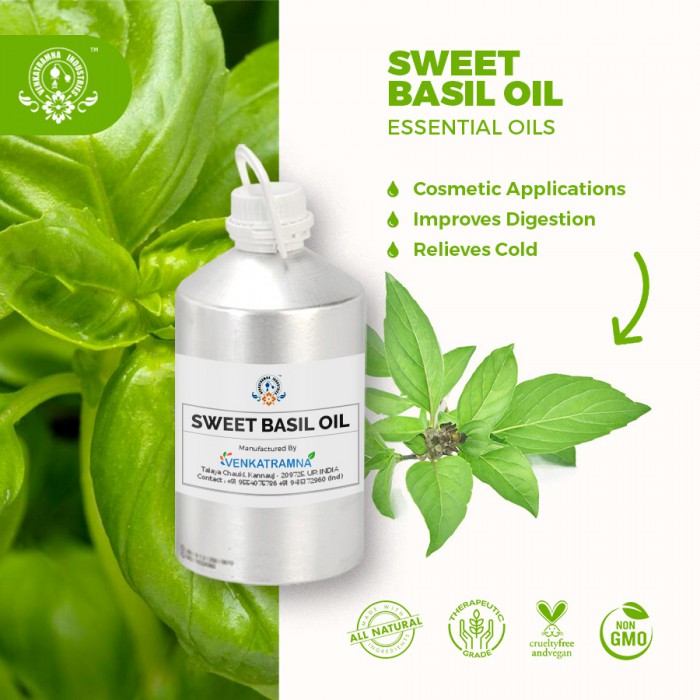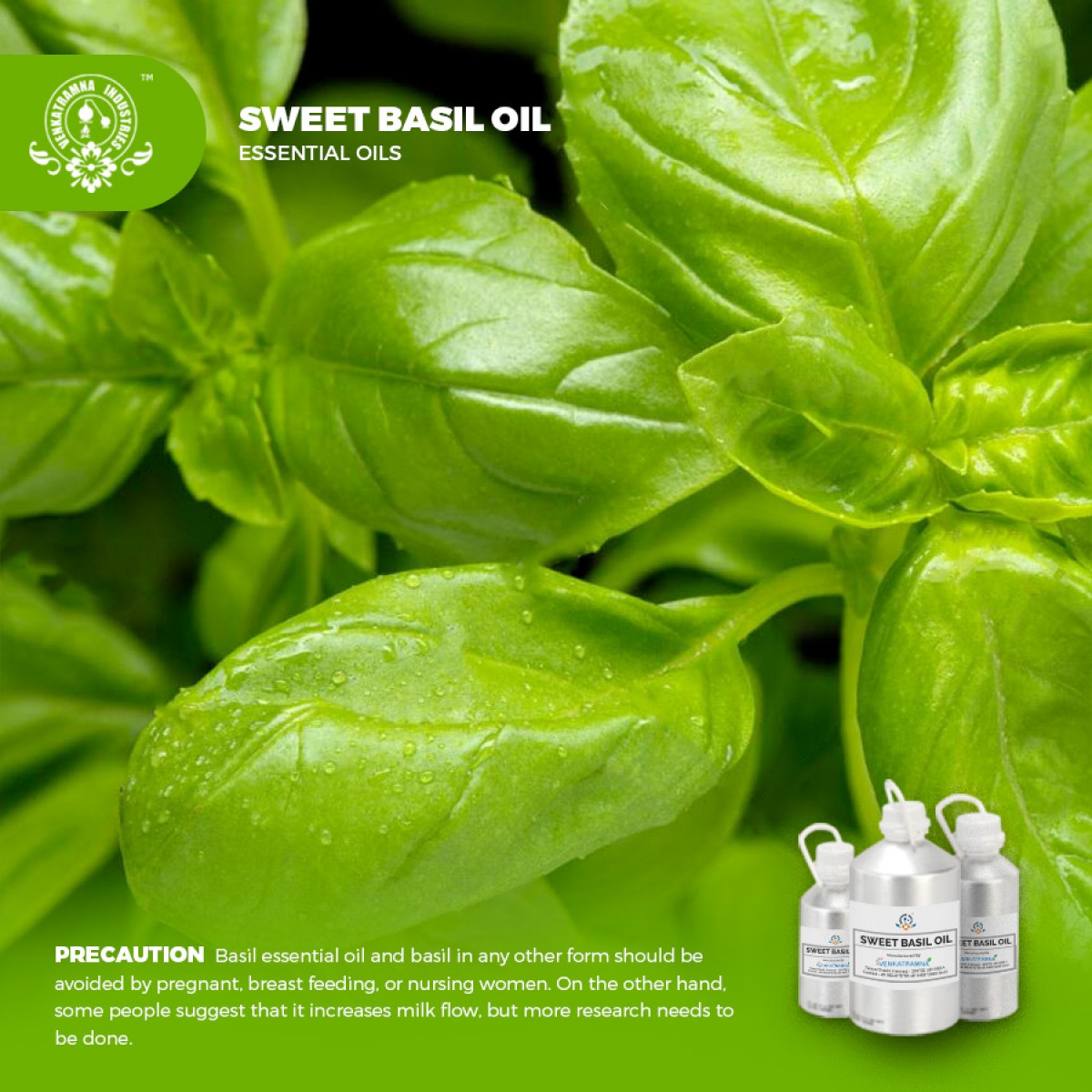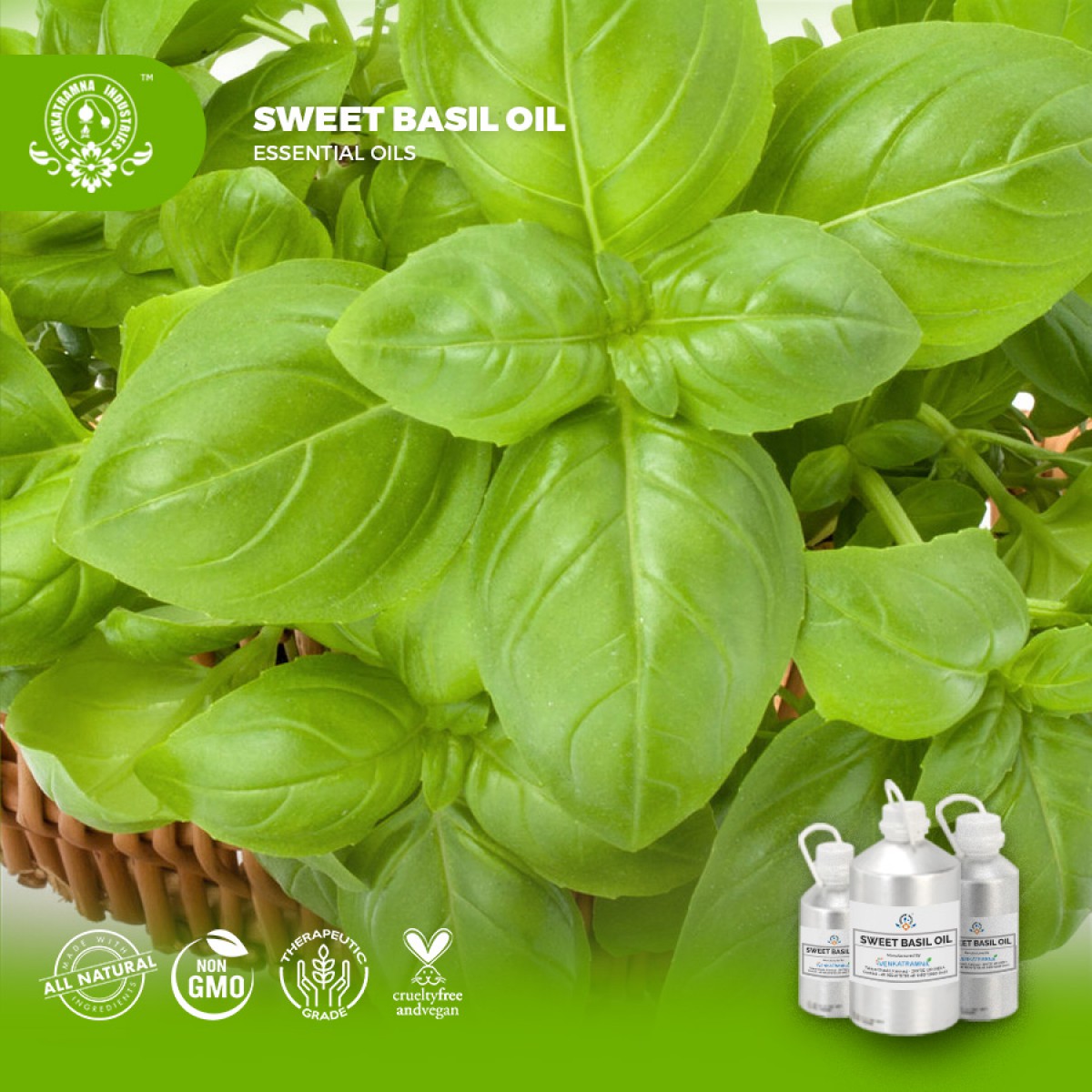Botanical Name: Ocimum basilicum Common name: Sweet basil, Tusli Plan Read More
|
Botanical Name: |
Ocimum basilicum |
|
Common name: |
Sweet basil, Tusli |
|
Plant family: |
Lamiaceae |
|
Genus: |
Ocimum |
|
Appearance/Color: |
colorless to pale yellow liquid |
|
Odor: |
Basil has a sweet, spicy, fresh scent with a faint balsamic
woody back note and a lasting sweetness that makes for a strong top note. |
|
Blends With: |
Bergamot, clary sage, clove Bud,
Lime, Eucalyptus, Juniper, Neroil and Rosemary. |
|
Origin |
Italy |
|
Source |
Leaves |
|
Method of
Extraction |
Steam Distillation |
Holy
Basil, also known as Tulasi or as the botanical Ocimum basilicum, ct.
Estragole and Ocimum basilicum, ct. Estragole is negative to part of
southern India and south east Asia. It is used extensively across India in the
practice of Ayurvedic medicine and for spiritual purposes.
As
a food ingredient the dried herb is very popular in Thai cuisine where is it
often called ‘Thai Holy Basil’ (known locally as kaphrao). You will find it in
many traditional Thai dishes so look out for it when you next indulge in your
Favorite Thai dishes!
Although
basil grows best outdoors, it can be grown indoors in a pot and, like most
herbs, will do best on a sun-facing windowsill. It should be kept away from
extremely cold drafts, and grows best in strong sunlight, therefore a
greenhouse or row cover is ideal if available. It can, however, be grown even
in a basement, under fluorescent lights.
If
its leaves have wilted from lack of water, it will recover if watered
thoroughly and place in a sunny location. Yellow leaves towards the bottom of
the plant are an indication that the plant has been stressed; usually this
means that it needs less water, or less or more fertilizer.
Basil is possibly native to India and has been cultivated there for more than 5,000 years. It was thoroughly familiar to the Greek authors Theophrastus and Discords. It is a tender plant, best known as a culinary herb prominently featured Italian cuisine, and also plays a major role in Southeast Asia Cuisines of Indonesia, Thailand, Malaysia, Vietnam, Cambodia, Laos, and Taiwan. Depending on the species and cultivar, the leaves may taste somewhat like anise, with a strong, pungent, often sweet smell.
DISCLAIMER
The complete range of conditions
or methods of use are beyond our control therefore we do not assume any
responsibility and expressly disclaim any liability for any use of this
product. Information contained herein is believed to be true and accurate however,
all statements or suggestions are made without warranty, expressed or implied,
regarding accuracy of the information, the hazards connected with the use of
the material or the results to be obtained from the use thereof. Compliance
with all applicable federal, state, and local laws and local regulations
remains the responsibility of the user.
The FDA has not evaluated the
statements on this website. No claims are made by Venkatramna Industries as to
the medicinal value of any products from vriaroma.com or by us. The information
presented here is for educating our customers about the traditional uses of
essential oils and is not intended to diagnose, treat, cure, or prevent any
disease. You are responsible for understanding the safe application of these products.
If you have any questions, please call or email us for further information.
As per NAHA guidelines, New Directions Aromatics
(NDA) does not recommend the ingestion of essential oils. It is imperative to
consult a medical practitioner before using Essential Oils for therapeutic
purposes. Pregnant and nursing women and those taking prescription drugs are
especially advised not to use this product without the medical advice of a
physician. The oil should always be stored in an area that is inaccessible to
children, especially those under the age of 7.
In
Ayurvedic medicine it is known to help treat colds, headaches, stomach
disorders, inflammation, heart diseases, various forms of poisoning, and
malaria.
It
can also be used as an ‘energizer’ in room diffusers it is thought to stimulate
the creative receptors in the brain when working (a good one to sneak into the
office!).
In
aromatherapy Holy Basil purifies and cleanses the air and is thought to support
our respiratory, nervous and digestive systems.
COMMON
USAGE
·
Cosmetic Applications
·
Improves Digestion
·
Relieves Cold
·
Treats Asthma
·
Treats Infections
·
Relieves Stress
·
Improves Blood Circulation
·
Alleviates Pain
·
Eye Care
·
Prevents Vomiting
·
Treats Itching
Ingredients:
|
S.No |
Key Constituents |
Strength (%) |
|
1 |
linalool |
53.7-58.3 |
|
2 |
Eugenol |
9.4-15.2 |
|
3 |
1,8-cineole |
6.0-6.7 |
|
4 |
(E)-a-bergamotene |
2.0-3.8 |
|
5 |
Germacrene D |
2.0-3.0 |
|
6 |
t-cadinol |
2.6-3.0 |
|
7 |
Estragole |
0.2-2.0 |
|
8 |
a-bulnesene |
1.3-1.8 |
|
9 |
b-elemene |
0.9-1.5 |
|
10 |
d-cadinene |
0.9-1.4 |
|
11 |
(E)-b-ocimene |
1.0-1.3 |
|
12 |
Bornyl acetate |
0.8-1.2 |
|
13 |
Methyl-eugenol tr |
0.1 |
Safety summary
·
Hazards: potentially carcinogenic, based on estragole
and methyl eugenol content; may inhibit blood clotting.
·
Contraindications: should not be taken in oral doses.
·
Maximum Dermal use level
|
EU |
0.005% |
|
IFRA |
0.005% |
|
Tisser and and young |
0.1% |
Safety advice
Recommended
a dermal maximum of 0.1% based on 87.4% estragole and 4.2% methyl eugenol
content, and dermal limits of 0.12% for estragole and 0.02% for methyl eugenol.
Organ Specific
Effects:
·
Adverse skin reactions: undiluted basil oil was mildly irritating to
mice; tested at 4% on 25 volunteers it was neither irritating for sensitizing.
It is non-phototoxic. A 65-year-oid aromatherapist with multiple essential oil
sensitives reacted with to both 1% and 5% basil oil.
·
Cardiovascular effects: Estragole inhibits platelet aggregation, an
essential step in the blood clothing cascade.
Systemic effects
·
Acute toxicity:
o Basil oil (estragole CT)
o acute oral LD50 in rats 1.4 mL/kg;
o acute dermal LD50 in rabbits>5 mL/kg.
·
Carcinogenic/anticarcinogenic
potential: A basil oil consisting of 88.2% estragole
showed a very similar degree of genotoxicity to estragole in a ret liver DNA
repair test. Basil oil showed moderate chemo preventive activity against human
mouth epidermal carcinoma cells and significant activity against mouse leukemia
cells, with respective IC50 values of 303 and 36 mg/mL. Estragole and methyl
eugenol are rodent carcinogens when oral exposure is sufficiently high.
·
Hazards: May be neurotoxic, based on
camphor content.
·
Contraindications (all routes):
Pregnancy, breastfeeding.
·
Maximum adult daily oral dose 250 mg
·
Maximum dermal use level 8%
Organ-specific effects
·
Adverse skin reactions: No information
found. Fenchone is relatively non-irritant and non-sensitizing.
Systemic effects
·
Acute toxicity: No information found. The
rat acute oral LD50 for fenchone is 6.16 g/kg. Camphor minimum LD50 is 1.7 g/kg
in rats. Camphor is potentially neurotoxic and is thought to be more toxic in
humans than in rodents.
·
Carcinogenic/anticarcinogenic potential:
No information was! found for Spanish lavender oil, but it contains no known
carcinogens.
·
Ecotoxicity: No data available.
·
Bioaccumulation: No data available
·
Mobility in soil: No data available
·
Persistence and degradability: No data available
·
PBT and vPvB assessment: No data available





 MSDS-Basil1.pdf
MSDS-Basil1.pdf




